The Dos and Don'ts of Foam Rolling
Discover the essential do's and don'ts of foam rolling with your personal training clients
The foam roller is a staple piece of exercise equipment that is found in most modern gym and personal training environments – you may also come across it in Pilates and reformer Pilates studios, where it is used for an entirely different purpose than it was designed (to create instability as opposed to massaging muscles).
While traditionally they were made from foam, nowadays they are made from a variety of materials, coming in different sizes, textures and densities. Some are soft and smooth, while others are hard and dimpled, and it’s even possible to get a vibrating foam roller. There really is a roller for everyone.
Users generally position themselves along the roller and use their bodyweight to apply pressure to one or more target areas, which typically are the softer muscle and/or connective tissues (soft tissues). Using a rolling action, the foam roller applies a massage-like effect to the soft tissues area to create a releasing mechanism. In fitness and strength and conditioning language, this is referred to as ‘self-myofascial release’, or SMR for short.
The aim of SMR is to apply a similar effect to the soft tissues as myofascial release, which is usually applied by a trained therapist (e.g. sports massage therapist, physiotherapist or osteopath). While there can be no suggestion that SMR is as effective as myofascial therapy performed by a trained and experienced clinician, it certainly offers those who have limited access or resources with an alternative approach to tackling their niggles, aches and pains.
Before we explore the effects/benefits of foam rolling, it’s necessary to take a slight detour and look at how muscles and fascia become dysfunctional in the first place.
Muscles are very complex structures. In simple terms, they are made from bundles of parallel muscle fibres that are wrapped in a tough fibrous outer layer called fascia. In a normal functioning muscle, the fibres and the fascia should glide alongside each other without any ‘snagging’ or ‘stickiness’.
However, as is often the case, the effects of modern life can often conflict with how our bodies are supposed to function and the net result is dysfunction.
Long periods of immobility and inactivity (e.g. sitting), intense physical training (e.g. weight training, aerobic endurance exercise), overly repetitive joint movements (e.g. lifting/carrying a child, bag or other object in the same way), and/or occupational movements that are overly repetitive (e.g. typing, lifting, stooping), can all cause binding between the muscle and fascia creating fibrous knots known as adhesions. These adhesions present in the muscle as tight, tender points which cause mild pain and discomfort when pressure is applied.
Soft tissue adhesions are more colloquially known as trigger points, hot spots and/or knots.
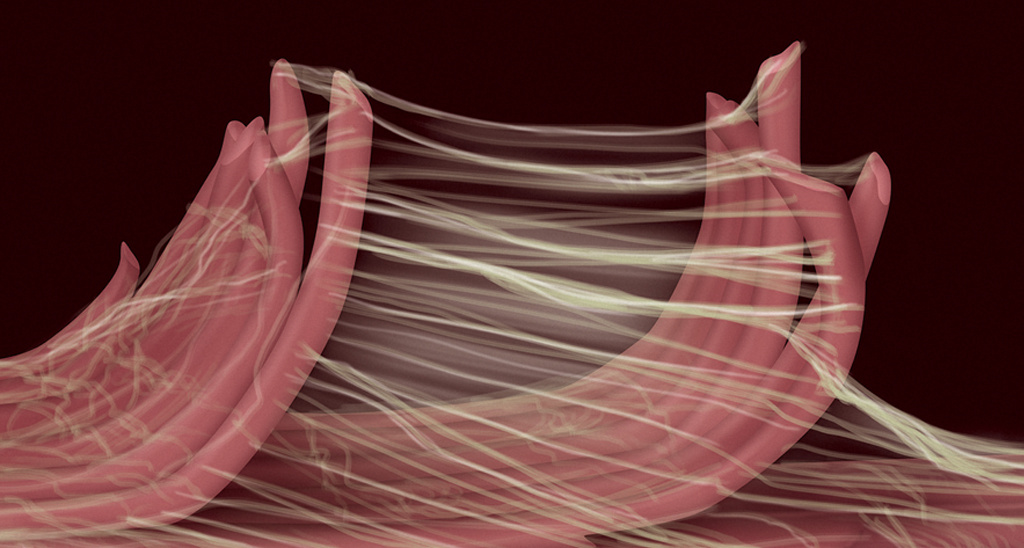
So, we know that soft tissue adhesions (also known as fascial adhesions) are places where the muscle fibres and fascia become ‘glued together’, preventing the smooth gliding action of muscle fibres. This binding reduces the efficiency of muscle fibres to generate force, and can also result in additional strain being placed on other fibres and neighbouring muscles to compensate. Inflammation may also be present at this site in some cases. For all of the reasons above, fascial adhesions have the potential to cause both local and referred pain – this is pain that presents away from the site of the adhesion.
Adhesions can cause muscles to become tight, although the precise mechanism for this is not well understood. It may be that the adhesion causes pain and discomfort while stretching, and consequently, the person avoids stretching. Alternatively, it may be an adaptation to the inflammation and dysfunctional tissues. In reality, it’s probably the cumulative effect of both.
Stretching is a common prescription for those with tight muscles. While there are different types of stretches, and each have their merits and drawbacks, it’s beyond the scope of this article to discuss the pros and cons of any particular method of stretching. While stretching is essential for improving flexibility and the active range through which a muscle can work, it will have little to no effect on a common cause of soft tissue dysfunction and pain – adhesions.
Self-myofascial release applies direct pressure to the site of the trigger point/adhesion, causing it to disperse, breakdown and remodel in a similar way to the effects of sports massage and myofascial release.
However, opponents of foam rolling argue that the effects of the technique are ‘substantially’ less than massage and myofascial release, largely because the foam roller is unable to penetrate deep enough into the tissues, and/or generate sufficient shear force in the fibres to break up the adhesions.
They argue that the effects of foam rolling are largely short-term and neural – the nerves cause muscle fibres to relax, and consequently the range of motion in those muscles increases for a short period of time. In contrast, there are a sufficient number of research and exercise professionals who argue against this position, stating that regular foam rolling can help to increase range of movement within muscles (without compromising force production) and that it may even result in higher levels of force production (by increasing muscle activity).
This suggests that foam rolling or SMR may actually be a valuable activity to perform before exercise (e.g. during a warm-up period).
It is important to note that not all muscles need to be foam rolled equally. To get the best results, you should select SMR exercises according to your individual needs.
Target areas for foam rolling can be identified in several ways:
To foam roll properly, you should lie on the roller so that it is between the target muscle/tissue and the ground. You should then roll up and down the target muscle/area using moderate pressure in an exploratory fashion, seeking out any adhesions and trigger points. Start out with mild pressure and gradually allow the roller to go deeper with each roll.
For large, wide muscles, such as the quadriceps, it may be necessary to move medially or laterally also (inside and outside) to ensure that the entire muscle is affected.
If any trigger points are found, (they normally present with localised tenderness and/or pain), roll firmly on that spot for 30-60 seconds, or until the tension and pain subsides. It is normal for the pain to ease gradually, although in particularly sensitive areas, it may take a few sessions.
If an area is too painful to roll directly, pressure can be reduced by adjusting the body position, or using the arms or legs for more support. In the case of very tender areas, rolling should only be performed on the surrounding areas and gradually introduced to the painful area over a number of sessions. This helps to build a tolerance.
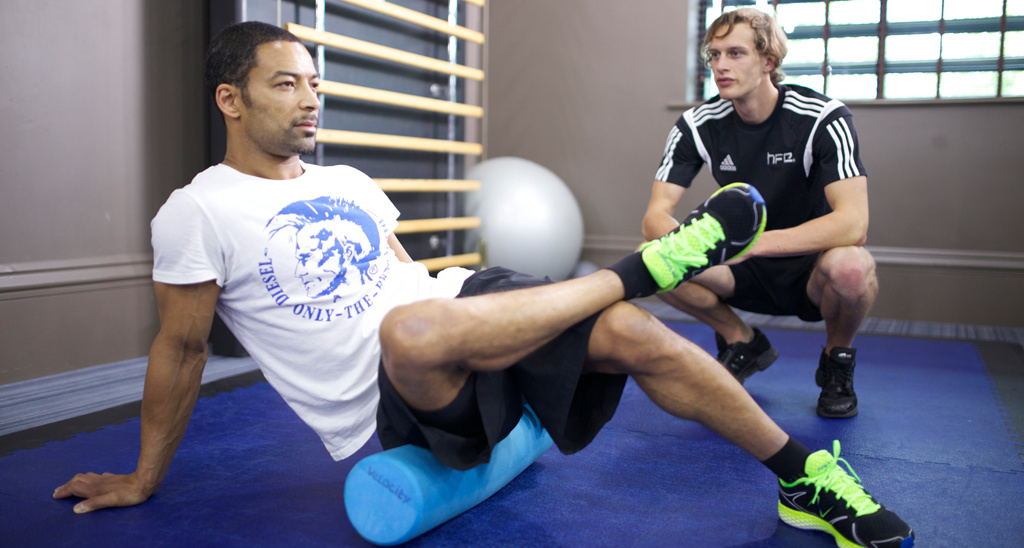
There are no universally accepted guidelines for using a foam roller and there is certainly a lot of debate amongst exercise, conditioning and rehabilitation professionals about their worth, value and use. Generally speaking, body position should be supported with the arms and/or legs to enable the amount of pressure that is applied to be carefully controlled. This position should then be changed in order to reveal the target area/tissues to be rolled. By changing body position in this way, it is possible to foam roll almost every major muscle group and fascial sling in the body, although some are much easier to reach than others.
In summary, foam rolling provides an accessible and cost-effective alternative to hands-on massage treatments and can be performed almost anywhere and anytime without the need for a sports massage therapist.
Foam rolling can have a profound effect on muscles and other connective tissue but that effect could be negative if rolling if performed incorrectly. To maximise results while minimising risk, users of foam rollers should observe the following:
Once the user has finished foam rolling, the muscles should feel worked but not overly fatigued and range of movement of the associated joint(s) should increase.
Feel confident introducing therapeutic relief into sessions by becoming a true expert with our level 3 foam rolling and myofascial release course.
There are dozens of foam rolling exercises to try but here are five of the best. They address areas of the body that are prone to tightness and that most people need to work on. The more bodyweight placed on the roller, the deeper and potentially more painful the effect will be. Reduce the amount of weight placed on the roller if a less intense SMR session is required.
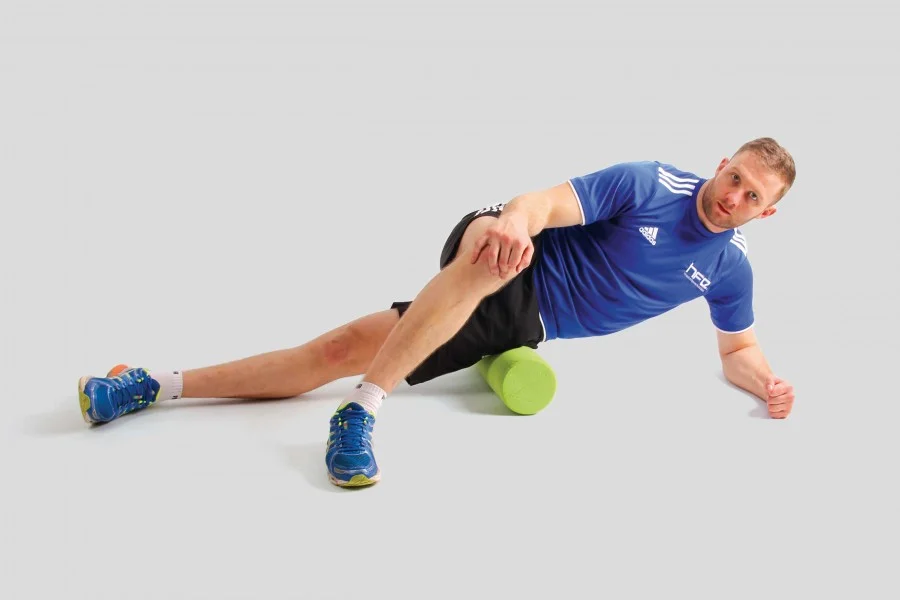
ITB – located on the outside of the thigh from the hip to the knee. The ITB, short for iliotibial band, is a problem area for many exercisers, especially runners.
Lie on the side with the roller under the lowermost leg. Initially, bend the upper leg and rest the foot on the floor to reduce the amount of pressure. Roll up and down the roller from the side of the knee to the top outside of the gluteus maximus. Stop and focus on any hot spots although it’s likely that term can be applied to the whole upper thigh. Turn over and do the other leg. For more pressure, place the legs together to increase the weight on the roller.
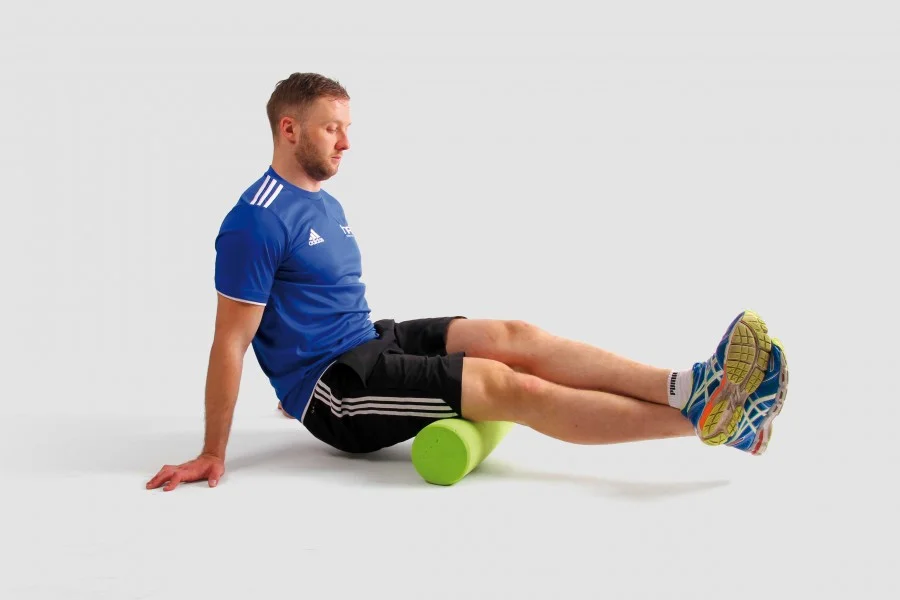
Hamstrings – sit up tall with legs straight and hands either side of the hips to form an L position. Place the roller under the thighs. Roll up and down so the roller goes from above the back of the knees to just below the gluteus maximus. If more pressure is required, cross the legs and do one hamstring at a time.
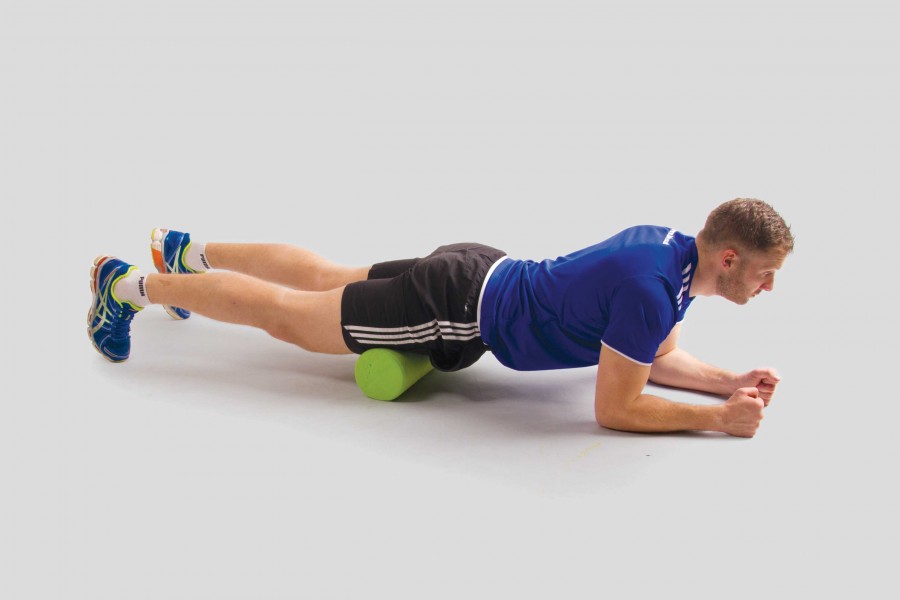
Quadriceps – lying on the front and resting on the elbows, place the roller under the thighs. Roll up and down from the tops of the knees to the tops of the thighs. Cross the legs and do one leg at a time if more pressure is required. Avoid excessive lumbar extension.
Glutes – with bent legs, sit on the roller with arms supporting the upper body. Cross the left ankle over the right knee. Roll the gluteus maximus back and forth while leaning from side to side. Once one side is done, switch legs and repeat.
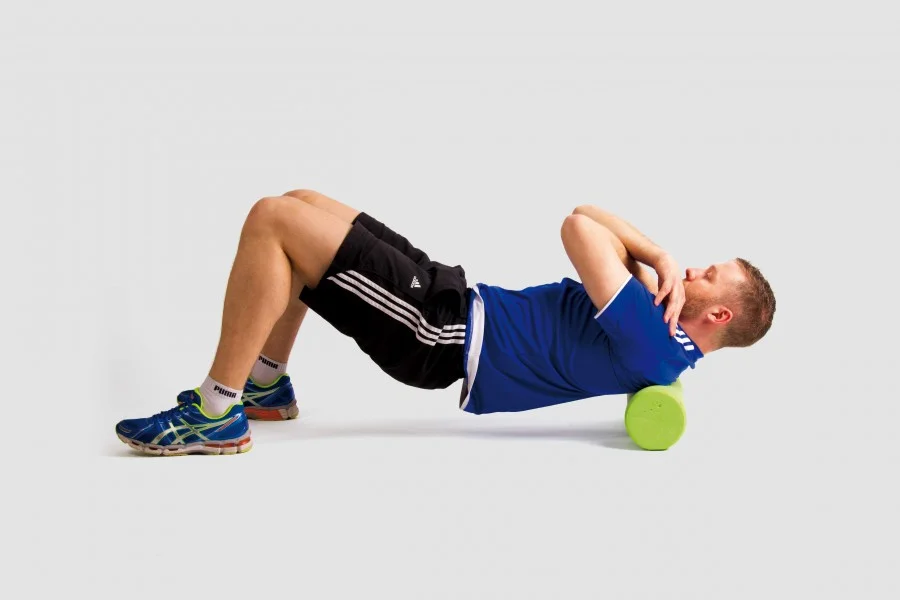
Thoracic spine – too much time sitting at a desk can have a ruinous effect on posture. This hunched position can be undone, at least temporarily, by rolling the thoracic spine. Lie on the back and place the roller behind the shoulders. With legs bent and neck relaxed, slowly roll the roller down the thoracic spine to level with the bottom ribs. Roll back up and repeat. It is not uncommon to hear/feel some clicks as the vertebrae move back into the correct position. After two or three slow passes have been made up and down the thoracic spine, position the roller behind the shoulders and lie back letting gravity pull the thoracic spine into gentle extension. Hold this position for 30 to 60 seconds before slowly turning to the side and carefully standing up.
In addition to SMR, foam rollers can be used for other fitness activities:
Foam rolling can take as little as ten minutes a day but that adds up to a 70-minute massage each and every week. Cheap and long-lasting, foam rollers are hard on the adhesions that can leave muscles feeling tight and tired.
If you’re interested in learning more about foam rolling techniques and how they can be used to apply self-myofascial release, take a look at our foam rolling instructor course.
Back to articlesAnd get the fast-paced world of personal training delivered straight to your inbox every week
Great news, you're on the list...